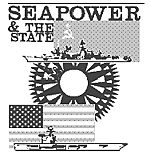
Players 2 (suitable for solitaire play)
Playing time 3 to 6 hours
Period 1984 to 1994
Turn Four days
Map 900 Km (500 Mi)/hex
Unit individual capital ships, groups of lesser ships; land based aircraft
Components
1 cardboard box
1 22” x 28” unmounted three-color map of the earth projected as an Eckert-Zenithal equal area projection
1 half-size13-page rulebook
400 ½” die-cut counters
Counter Manifest
157 Soviet (brown)
171 US (green) and Allies (French - tan); (UK - blue); (Germany - grey) front Numerical values representing antisurface, anti-air, anti-submarine, EW and defense values, plus movement, unit type, and whether the unit is nuclear powered or not b ack Unit id number, scenario the counter is used in, setup hex and, in the case of ballistic missile subs, range.
SimCan says:
“I wanted to show the strategic considerations of modern naval warfare and the clash of doctrines that has resulted from the different ways the participants have gone about resolving these considerations. ... The West has a far flung and well established base system and an enormous inventory of ships, submarines, missile submarines, and aircraft. At the heart of this combat system is the aircraft carrier for force projection and the ballistic missile submarine for nuclear ‘deterent’. ... The East for all intents and purposes is the Soviet Union. ... That she has done so in a creditable manner in spite of numerous obstacles is very surprising and much of the credit doubtless goes to Admiral Gorshkov as the head of the Soviet Navy.
But the Admiral’s concept of the functions of a naval force are not the same as those of his Western counterparts and the result is a force much more concentrated on submarines and aircraft for power projection and on even more submarines for ‘deterent’; though from a Soviet view the term ‘deterent’ is meaningless. ... And running through both these tasks is an orientation toward centrally controlled combined arms supportive techniques that are very contrary to normal Western Practice.”
The Reviewers say:
“The naval buff will find this game intriguing, but others will spend their money elsewhere.” --‘TMI’ in Grenadier 17.
“All in all, I’m quite enthusiastic about Seapower & the State. Newberg has taken some potentially troublesome aspects of the situation and has realistically reduced them to playable game terms. ... Seapower & the State is a real gem and belongs in every naval gamer’s inventory.” --Lt John J. Vanore, USN in F&M 33.
Comments
Seapower & the State is one of my favorite games. It is the only game I’m aware of that depicts WWIII at sea at the strategic-operational scale. Victory Games’ Fleet series is better at depicting operational scale combat in it’s intricacies, but Seapower shows the strategic interaction of all theaters, and clearly shows the decisive influence of naval strategy in a third world war. The game has flavorful nuances such as Western ‘lone wolf’ submarine tactics or Soviet Central Command rules. Strategic conflict levels from conventional up the ladder to tactical, operational and strategic nuclear warfare is portrayed in a logical way, enabling players to select conflict level according to understandable game architecture. The map is not up to modern graphical standards and the counter density is occasionally a problem. Tracking the aircraft points is a hassle, but still I highly recommend the game.
Collectors notes
Boone lists low, high and average prices of 5/10/8.17 at auction and 10/30/16.00 for sale.
Errata
Soviet Unit no. 72 should set up in hex 4114.
The Following U.K. units should not be used in the 1984 scenario: 9, 13 and 15; unit 11 should not be used in scenarios 1, 2 and 3 (these reflect repairs and refits resulting from the Falklands War).
Hex 1215 should be considered a non-target hex.
Steve Newberg says:
The strategic dimensions of the application of seapower are seldom addressed in modern entertainment war gaming, though they are a staple we deal with constantly on the professional side of the business. With Seapower & the State we tried to bring a bit of the modern strategic gaming concept to board wargamers. The scale is global. You now have to consider recon satellites and anti-satellite satellites. Tanker traffic flows moving oil and freighter routes for hard goods become major concerns. Fleets and warships do not exist in isolation, but as part of the grander scheme. With this game we tried to show some of that larger picture, and I am still quite happy with the results.
Back to Simulacrum Vol. 3 No. 2 Table of Contents
Back to Simulacrum List of Issues
Back to MagWeb Master Magazine List
© Copyright 2001 by Steambubble Graphics
This article appears in MagWeb (Magazine Web) on the Internet World Wide Web. Other military history articles and gaming articles are available at http://www.magweb.com